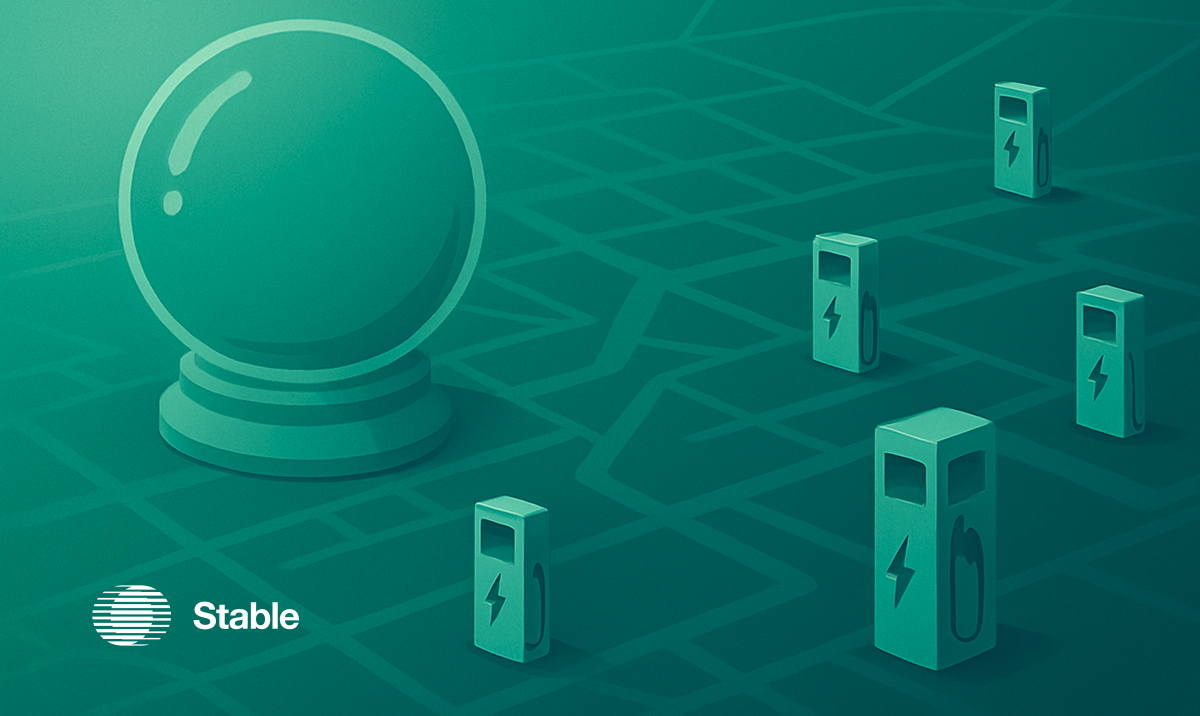
EV charging forecasts often get treated like crystal balls, one number meant to predict the future. In reality, they are closer to maps. They are built on hard data, tested against actual results, and designed to be adjusted as conditions change.
Some of the biggest networks now treat site selection as an optimization problem. They feed in EV traffic patterns, layer in dozens of other signals, and let the data point to where chargers should go. It’s not guessing anymore, it’s engineering.
The difference between a strong forecast and a weak one is the difference between building a high-performing site and locking up capital in an underused charger.
The foundation: historical data you cannot change
Every forecast starts with a fixed baseline. That means real charger usage data plus more than 75 location-specific datasets such as EV registrations, traffic counts, nearby amenities, demographic trends, and competitive landscape. This baseline cannot be edited, and that is the point. It is the anchor that keeps every scenario tied to reality.
The flexibility: futures you can explore
Once the baseline is set, the model opens up. You can test how faster EV adoption shifts ROI, how a price change affects breakeven, or whether a different charger configuration improves utilization. Scenario planning has become just as important as the baseline. Investors want to see how breakeven changes if adoption speeds up, if utility costs shift, or if incentives come into play. A single forecast number is no longer enough.
Validation before and after launch
In high-stakes infrastructure, forecasts are only as good as their track record. The most reliable ones are checked against performance at comparable sites before they are used for investment decisions. Once a project is live, actual usage is compared with the forecast and the model is adjusted to improve future accuracy.
Why it matters, especially for investors
Developers are often selling the upside. Investors are protecting the downside. We have seen perfect-looking sites fall apart because the utility could not deliver enough power without major upgrades. On the other hand, sites that looked average on paper when they were being planned have turned into top performers as their market became more attractive.
A fast-charging station might lose money even at 15% utilization. But with a different price and better energy cost management it’s in the green.
The right forecast doesn’t just tell you how a site will perform, it helps you understand exactly which levers will make a site viable or not. What changes—for example, to the market, the installation costs, the energy costs, or the price—will make it attractive when it previously wasn’t?
When millions are on the line, the question is not just “what might this site earn” but “how confident are we, and under which conditions could that change.” Fixed historical data combined with transparent scenario testing means fewer blind spots. You see the risks and the opportunities before committing funds.
See it in action
Take a tour of Evaluate to see how investment-grade site selection and ROI modeling can guide your next project.
Schedule a demo
Schedule a 30-min time-slot with us directly, or send us a message if there's something else we can help with.